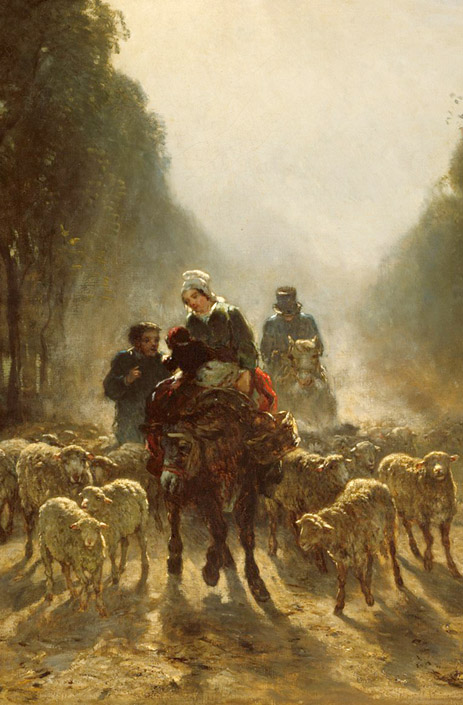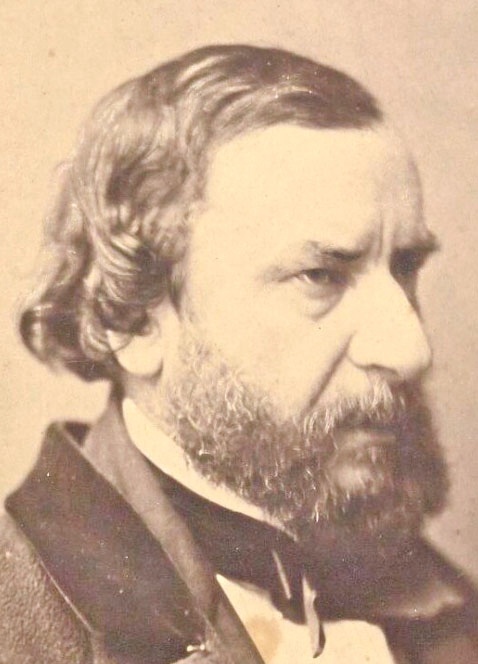Constantin Troyon (1810 – 1865), painter
1st image: Soirée; 2nd: Nadar (1855); 3rd: image 3 caption; 4th: caricature by Nadar (1850s);
(Alternative: Viollet-le-Duc)
Painter Constant Troyon's name was mentioned in an article discovered in 2024. Unfortunately, there are no records that he attended one of de Nieuwerkerke's16 Louvre-soirées. The shy painter hated the city, so it is doubtful if he would accept an invitation. Giraud never drew his caricature. His only contact in this (imaginary) depiction of a vendredi-soirée is Victor Regnault50a, the father of his friend the painter Henri Regnault.
In absence of family-wealth (he became orphan at the age of seven), Constant Troyon made a living creating flower decorations for the Sèvres porcelain factory where his father worked.
Impressionist painter Renoir followed the same path three decades later. A pure chance meeting in the Saint-Cloud forest with the elder painter Roqueplan changed Troyon’s life. Roqueplan became his teacher and sponsor.
Together with contemporaries like Theodore Rousseau (unrelated to still-life painter Philippe Rousseau64), and Dupré, Troyon dissociated himself from the realistic French school of painters, and started to paint landscapes in the late 1830s. Their gathering place near Fontainebleau became known as Barbizon.
Uncertain about his style, and not always favorably received at the Salons, he went on a trip to Holland in 1847. There, he studied 17th century animal painters Paulus Potter and Albert Cuyp. It stimulated him to change from rural settings to animal painting. Through these animals, he depicted not merely a poetic landscape but visualized a more complete impression of country-life. Troyon was a relentless worker, making long hours when he sketched and traveled, and created as much as eighteen paintings per month in the rest of the year.

His new style was applauded at the Salons of the 1850s.
Thanks to the improving economy, his works were quickly sold for good prices. It allowed him to purchase a house in the city and another in the countryside (designed by his friend, and contestant for this spot in the painting, Viollet-le-Duc40a). In the 1853 Salon he was runner-up with Rosa Bonheur for the gold medal. Louis Henriquel-Dupont51 won. Some of his major works are Sheep (1854), and The Road to Market (1859).
Many museums in the world have one of his many paintings with this theme on display.
He embarked on several national and international trips, but preferred a life withdrawn from the pressures of the city, focusing on his art work:
“I have spent entire seasons in the fields, without desiring for a single instant the pleasures of Paris, which, however, at certain times do not leave me indifferent."
After 1859, the wealthy Troyon no longer exhibited at the Salons. It was a point in his life when his health started to decline. In March 1865, he died of a spinal cord disease, likely neurosyphilis caused by what he had referred to as the “pleasures of Paris.”
A sale of his collection started on January 22, 1866: over 550 works by him, but also of Delacroix10, Millet, Courbet, Rousseau, and others were sold, raising 1.2 million francs. Today, this would be a value of € 2.5 – 3.5 million. It allowed his mother, a laundress, a quiet retirement.



